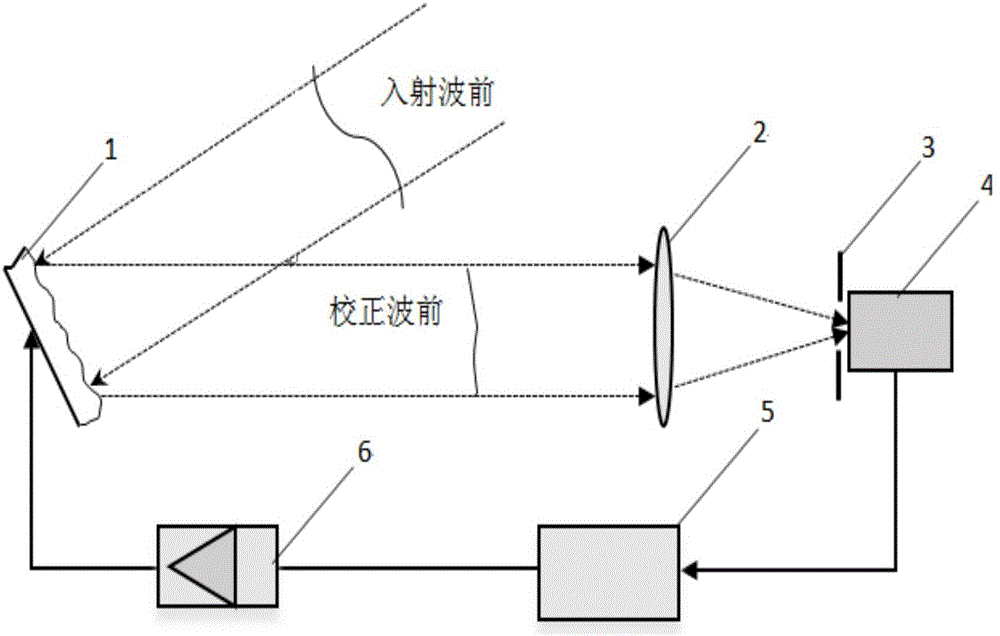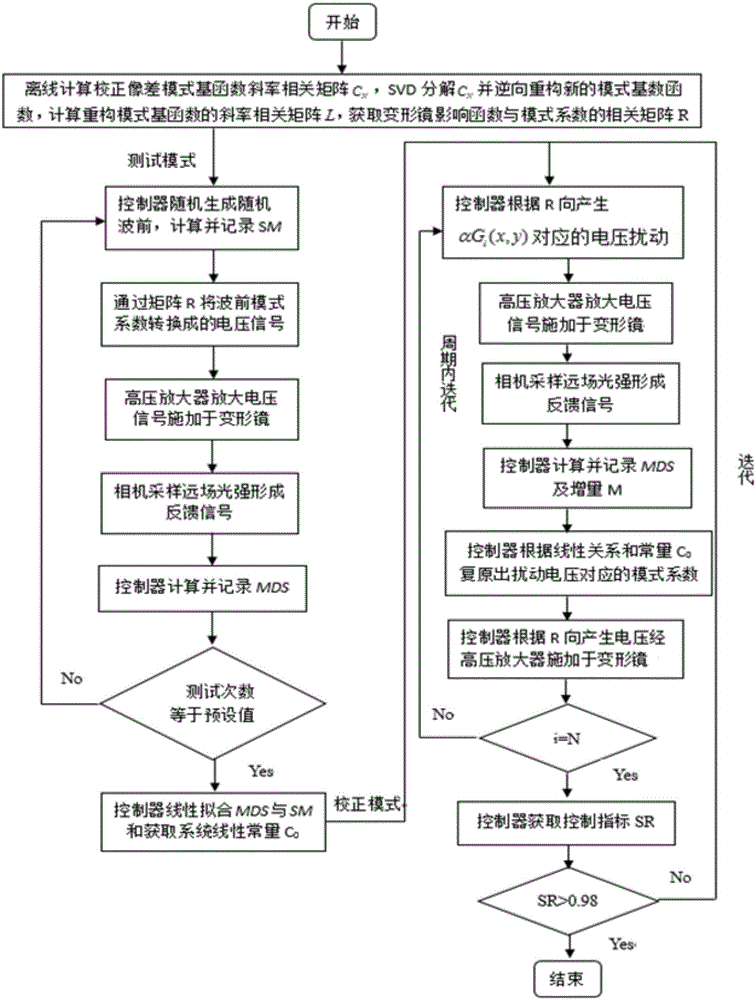Mode-based synchronous wavefront sensorless adaptive optical system
An adaptive optics and mode technology, applied in optics, optical components, instruments, etc., can solve the problems of increasing the constraints of the basis function of the aberration mode, increasing the difficulty of mathematical solution of the system, and the slope function is not necessarily orthogonal, etc., to achieve Reduce computational complexity and memory requirements, improve time-domain correlation, and reduce delay effects
- Summary
- Abstract
- Description
- Claims
- Application Information
AI Technical Summary
Problems solved by technology
Method used
Image
Examples
Embodiment Construction
[0053] The present invention will be further described below in conjunction with the accompanying drawings and implementation examples. The main condition of the implementation example, the incident wavefront aberration is composed of 18th-order Zernike polynomials except translation and tilt aberrations, that is, the aberration mode basis function F i (x,y) is Z i (x, y) (i=3~20), its coefficient follows the kolmogrov power spectrum and is randomly generated. When dynamic aberration correction is applied, the wind speed is 3m / s, and the interference intensity D / r=5.
[0054] figure 1 It is the system composition of the present invention, which is mainly composed of a wavefront correction unit deformable mirror 1, a focusing lens 2, an obscuring pinhole 3, a far-field detection camera 4, a controller 5 and a high-voltage amplifier 6. figure 2 It is a flowchart of the system aberration correction algorithm, which is mainly divided into offline data processing and real-time ...
PUM
 Login to View More
Login to View More Abstract
Description
Claims
Application Information
 Login to View More
Login to View More - R&D
- Intellectual Property
- Life Sciences
- Materials
- Tech Scout
- Unparalleled Data Quality
- Higher Quality Content
- 60% Fewer Hallucinations
Browse by: Latest US Patents, China's latest patents, Technical Efficacy Thesaurus, Application Domain, Technology Topic, Popular Technical Reports.
© 2025 PatSnap. All rights reserved.Legal|Privacy policy|Modern Slavery Act Transparency Statement|Sitemap|About US| Contact US: help@patsnap.com



